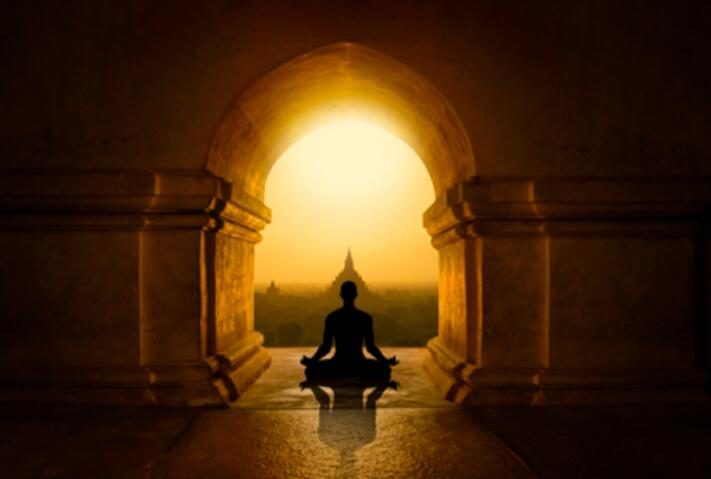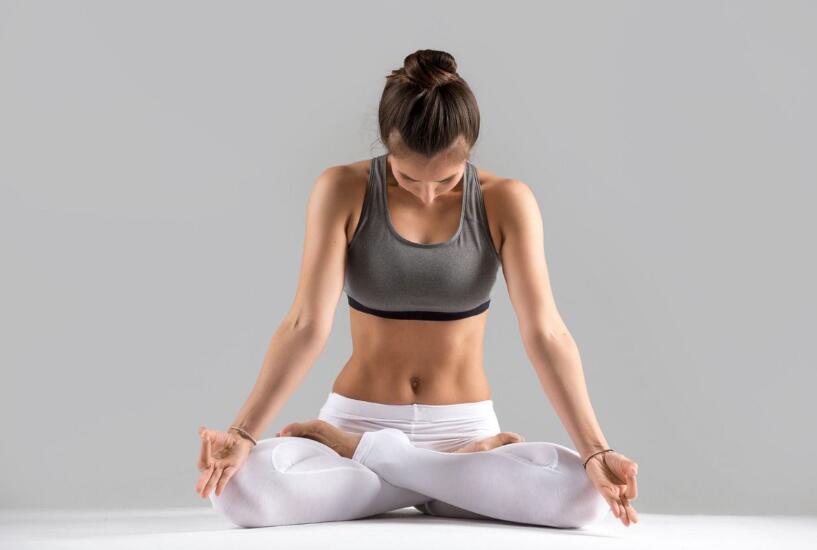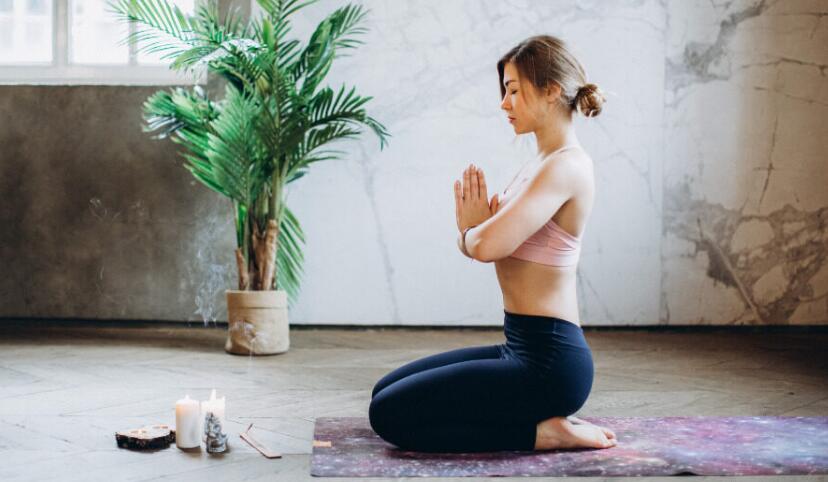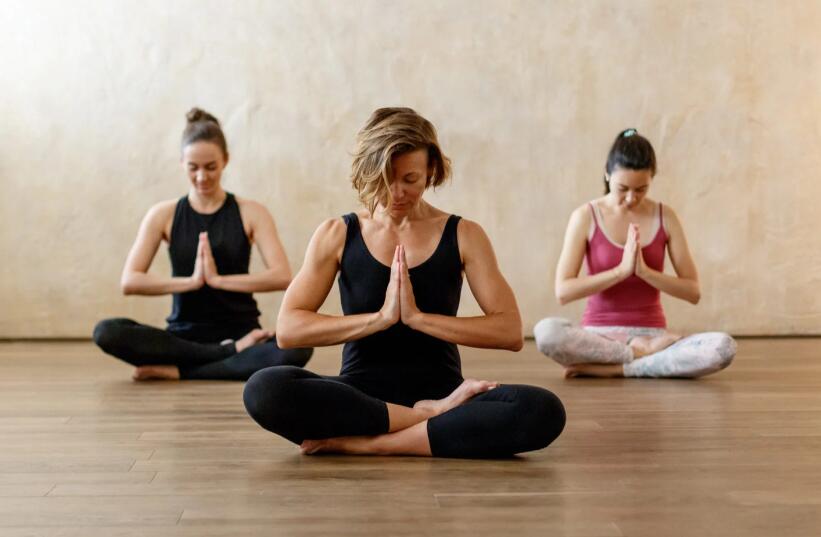If you want enlightenment, look no further than jnana yoga. This ancient practice is one of the most effective ways to reach your highest potential. Well, how to practice jnana yoga?
This blog post will discuss how to get started with jnana yoga and how it can help you achieve spiritual liberation.
How Can Jnana Yoga Help Me Achieve Enlightenment?

Jnana yoga is an ancient practice that has been used for centuries to help people achieve their highest potential.
This type of yoga focuses on developing one’s inner wisdom and understanding the true nature of reality. When practiced correctly, jnana yoga can lead to a state of spiritual liberation known as enlightenment.
Jnana yoga is also the path of knowledge, or the “yoga of wisdom.” It is considered to be one of the most difficult paths to follow, as it requires a deep understanding of the nature of reality. Practitioners of jnana yoga seek to gain knowledge through study and contemplation and to use that knowledge to achieve liberation from the cycle of birth and death.
Jnana yoga is often compared to a key that unlocks the door to enlightenment. The goal is not just to acquire knowledge, but to become wisdom itself. In this way, jnana yoga is a journey of self-discovery, and a path to ultimate truth.
If you’re interested in achieving enlightenment, there is no better way to do it than through jnana yoga. This practice can help you develop a deep understanding of the true nature of reality and your place within it.
The Benefits Of Practicing Jnana Yoga

Jnana yoga is the practice of acquiring knowledge, and it can provide some benefits that other types of yoga cannot.
For one thing, it can help you to develop a better understanding of yourself and the world around you. It can also help you to become more aware of your thoughts and emotions, and to learn how to control them.
In addition, jnana yoga can help you develop greater concentration and focus, which can be useful in your personal and professional life. It can also help you to become more patient and tolerant, and to have greater self-discipline.
Moreover, jnana yoga can also help you to find inner peace and calmness. If you’re looking for a way to improve your mind and your life, jnana yoga may be worth exploring.
Finally, jnana yoga can help you to achieve a state of spiritual liberation known as enlightenment. This is the ultimate goal of jnana yoga, and it is something that all practitioners strive for.
How To Get Started With Jnana Yoga

If you want to start with jnana yoga, there are a few things you should know.
1. Jnana yoga is not for everyone.
This type of yoga requires a deep understanding of the nature of reality, and it is not suitable for beginners. If you’re new to yoga, starting with another type of practice is best.
2. Jnana yoga is a slow and gradual process.
It can take years to achieve enlightenment, and it requires dedication and commitment.
3. Jnana yoga is best practiced with the guidance of a teacher.
If you’re serious about embarking on this path, find a qualified instructor who can help you along the way.
4. Jnana yoga requires regular practice.
You won’t achieve enlightenment overnight, so be patient and consistent in your practice.
5. There are many different books and resources available on jnana yoga.
If you want to learn more about this practice, do some research and find a resource that resonates with you.
Jnana yoga is a powerful practice that can help you to achieve enlightenment. If you’re dedicated and committed, it can be an incredibly rewarding experience.
So if you’re ready to start your journey, get out there and start practicing!
Tips For Practicing Jnana Yoga Effectively

Here are a few tips to help you get the most out of your jnana yoga practice:
1. Make sure that you’re doing it for the right reasons.
Jnana yoga is not a quick fix or a magic bullet. It’s a long and difficult path that requires dedication and commitment. If you’re not ready to put in the work, it’s not for you.
2. Be patient.
Jnana yoga is a gradual process, and it can take years to achieve enlightenment. Don’t get discouraged if you don’t see results immediately. Just keep practicing and eventually, you will see progress.
3. Find a qualified teacher.
A good teacher can help you to understand the concepts of jnana yoga and how to apply them in your life. Without guidance, it’s easy to get lost on this path.
4. Be consistent.
Jnana yoga requires regular practice, so make sure that you’re setting aside time for it every day. The more you practice, the faster you will progress.
5. Do your research.
There are many different books and resources available on jnana yoga. Find one that resonates with you and learn as much as you can about this practice.
By following these tips, you can make sure that you’re getting the most out of your jnana yoga practice. Remember, this is a difficult but rewarding path, so don’t give up!
Which Are The Three Core Practice E Of Jnana Yoga?

These three practices – Sravana, Manana, and nididhyasana – are at the core of jnana yoga.
Make sure that you’re doing all three regularly, and eventually you will start to see results.
Sravana
Sravana refers to listening to teachings on the nature of reality. This can be done by reading scriptures, attending lectures, or listening to audio recordings.
This can be done by reading scriptures, attending lectures, or listening to audio recordings. But what exactly are we supposed to be listening for? Well, the goal is to gain a deeper understanding of the world around us and our place in it.
We can learn how to lead more fulfilling and meaningful lives by listening to these teachings.
Manana
An old saying goes, “The only way to learn is by doing.” But what if you’re not quite sure what you’re supposed to be doing? That’s where manana comes in.
Manana is the practice of reflecting on these teachings and contemplating their meaning. This is how you internalize the teachings and start to apply them in your life.
By taking the time to reflect on what you’ve learned, you can see how it applies to your own life and begin making the necessary growth changes.
Nididhyasana
If you want to achieve enlightenment, you need to put in the work. That’s where nididhyasana comes in.
Nididhyasana is the practice of meditating on the teachings until they become second nature. This is how you achieve enlightenment.
In other words, it’s about really internalizing the teachings and making them a part of who you are. The goal is to get to a place where you don’t have to think about the teachings anymore – they just come naturally to you.
It’s a tall order, but it’s definitely achievable with enough dedication and effort. So if you’re serious about enlightenment, get ready to do some serious meditating. It’ll be worth it in the end.
Why Is Jnana Yoga Difficult?
Jnana yoga is a difficult practice because it requires a deep understanding of the nature of reality. This type of yoga is not suitable for beginners, and it can take years to achieve enlightenment.
Jnana yoga is best practiced with the guidance of a teacher. If you’re serious about embarking on this path, find a qualified instructor who can help you along the way.
How Can I Practice Jnana Yoga In Daily Life?
Jnana yoga is a powerful practice that can help you to achieve enlightenment. However, it’s important to remember that this is not a quick fix or a magic bullet. Jnana yoga requires dedication and commitment, and patience is important as you embark on this journey.
So, make time for regular practice. Jnana yoga requires regular effort, so it’s important to set aside time for it every day. Even if it’s just for a few minutes, make sure that you’re consistent in your practice.
Conclusion
Jnana yoga is a difficult but rewarding path to enlightenment. By following the tips in this article, you can make sure that you’re getting the most out of your practice. Remember, this is a journey, so don’t give up! With enough dedication and effort, you will eventually achieve your goals.
Please feel free to share your own tips and experiences in the comments below. And if you have any questions, feel free to ask. I’m always happy to help!
Happy practicing!
